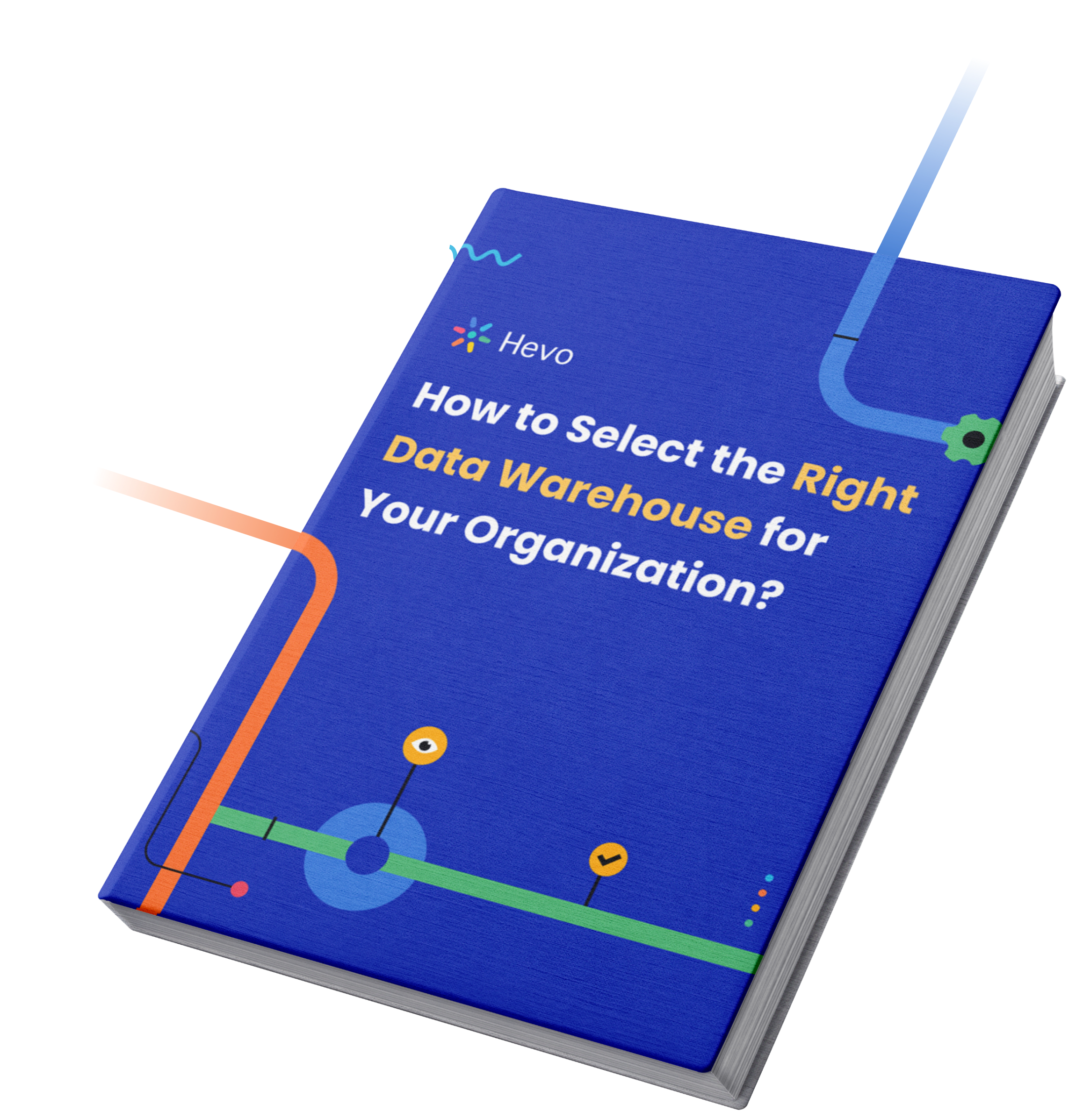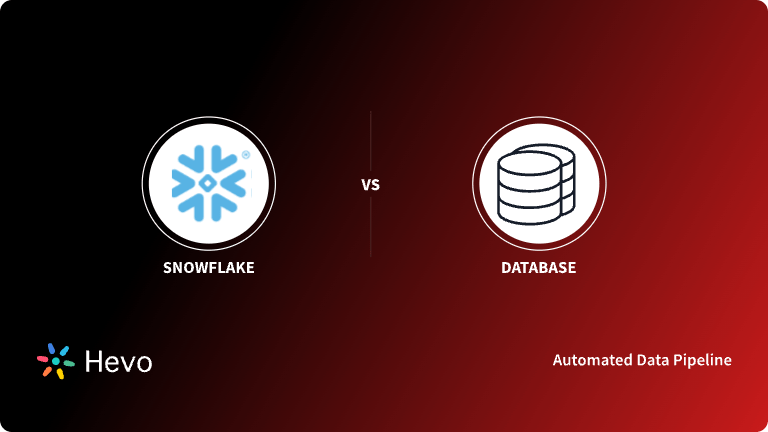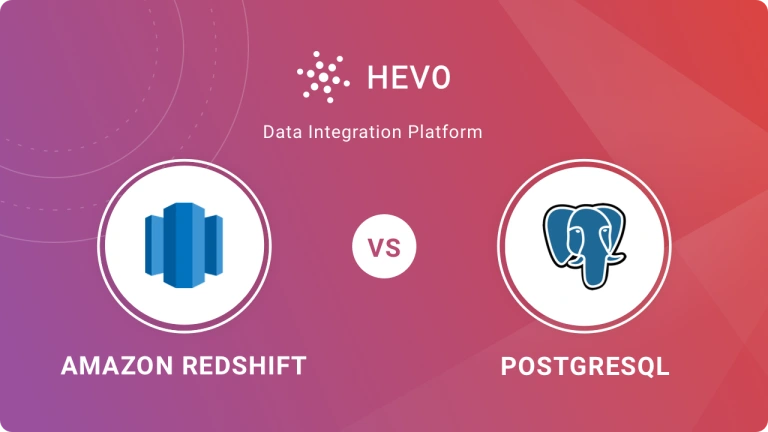PostgreSQL is a reliable database management system with a keen focus on SQL compliance and extensibility. PostgreSQL is well suited for various industries and use cases such as web apps, and finance to name a few. PostgreSQL has established itself as one of the most popular open-source Relational Database Management Systems (RDBMS) providing integrity and reliability to its users. Snowflake is a Data Warehousing company that provides seamless access and storage facilities across Clouds. It cements its authority as a service that requires near-zero maintenance to provide secure access to your data.
In this article, you will be exploring Snowflake vs Postgresql through 5 critical differences. It also covers the basics of Snowflake and Postgres before delving into the differences.
Other than the differences, you can also have a look on the article about how to migrate data from PostgreSQL to Snowflake.
Table of Contents
Introduction to Snowflake
Snowflake is a fully managed service that provides customers with near-infinite scalability of concurrent workloads to easily integrate, load, analyze, and securely share their data. Its common applications include data lakes, data engineering, data application development, data science, and secure consumption of shared data.
Snowflake’s unique architecture natively integrates computing and storage. This architecture enables you to virtually enable your users and data workloads to access a single copy of your data without any detrimental effect on performance. With Snowflake, you can seamlessly run your data solution across multiple regions and Clouds for a consistent experience. Snowflake makes it possible by abstracting the complexity of underlying Cloud infrastructures.
Snowflake also allows you to access shared datasets and data services via the Snowflake Data Marketplace that provides ample opportunities to connect with thousands of Snowflake customers.
Here are a few features of Snowflake as a Software as a Service (SaaS) offering:
- Accelerate Quality of Analytics and Speed: Snowflake allows you to empower your analytics pipeline by shifting from nightly batch loads to real-time data streams. You can accelerate the quality of analytics at your workplace by granting secure, concurrent, and governed access to your Data Warehouse across the organization. This allows organizations to optimize the distribution of resources to maximize revenue by saving on costs and manual effort.
- Improved Data-Driven Decision Making: Snowflake allows you to break down data silos and provide access to actionable insights across the organization. This is an essential first step to improve partner relationships, optimize pricing, reduce operational costs, drive sales effectiveness, and much more.
- Improved User Experiences and Product Offerings: With Snowflake in place, you can better understand user behavior and product usage. You can also leverage the full breadth of data to deliver customer success, vastly improve product offerings, and encourage data science innovation.
- Customized Data Exchange: Snowflake allows you to build your data exchange which lets you securely share live, governed data. It also provides an incentive to build better data relationships across your business units and with your partners and customers. It does this by achieving a 360-degree view of your customer, which provides insight into key customer attributes like interests, employment, and many more.
- Robust Security: You can adopt a secure data lake as a single place for all compliance and cybersecurity data. Snowflake Data Lakes guarantee a fast incident response. This allows you to understand the complete picture of an incident by clubbing high-volume log data in a single location, and efficiently analyzing years of log data in seconds. You can now join semi-structured logs and structured enterprise data in one data lake. Snowflake lets you put your foot in the door without any indexing and easily manipulate and transform data once it is in Snowflake.
Snowflake allows data scientists and data analysts to experiment and make new connections without breaking down the core activities. This is a crucial benefit for numerous verticals such as retail where timely information is imperative for success.
A Snowflake-native app to monitor Fivetran costs.
Introduction to PostgreSQL
PostgreSQL supports both JSON (non-relational) and SQL (relational) querying, built on the foundation of over 15 years of active development. This has led PostgreSQL to be the primary data warehouse or data store for various mobile, web, geospatial, and analytics applications. PostgreSQL also supports a high level of performance optimization and advanced data types. Here are a few benefits of using PostgreSQL:
- Reliability and Standards Compliance: PostgreSQL is a highly fault-tolerant database owing to its write-ahead logging functionality. It has a large base of Open-Source contributors that acts as the force behind its community support network. Being ACID compliant, PostgreSQL offers full support for joins, views, triggers, foreign keys, and stored procedures in various languages. This includes support for the storage of binary large objects, including video, sounds, and pictures.
- Open Source License: The PostgreSQL source code is made available under an Open-Source license. This grants you the freedom to modify, use, and implement it as you wish, free of cost. PostgreSQL eliminates the risk for over-deployment since it carries no licensing cost. Its dedicated community of enthusiasts and contributors regularly finds bugs and fixes which contributes to the overall security of the database system.
- Rich Extensions and Features: PostgreSQL boasts several robust features like point-in-time recovery, granular access controls, asynchronous replication, nested transactions, and Multi-Version Concurrency Control (MVCC) among many others. PostgreSQL is highly scalable in the number of concurrent users it can accommodate and the quantity of data it can manage.
Here are a few popular use cases of PostgreSQL:
- Federated Hub Database: PostgreSQL’s JSON support and Foreign Data Wrappers allow it to connect with other data stores including NoSQL databases. This allows PostgreSQL to act as a federated hub for polyglot database systems.
- LAPP Open Source Stack: PostgreSQL can run various apps and dynamic websites as part of a robust alternative to the LAMP stack. LAPP stands for Linux, Apache, PostgreSQL, and PHP, Perl, and Python.
- Geospatial Database: PostgreSQL supports geographic objects in tandem with the PostGIS extension, and can be used as a geospatial data store for geographic information systems and location-based services.
A fully managed No-code Data Pipeline platform like Hevo helps you effortlessly integrate data from 150+ data sources (including 30+ Free Data Sources), such as PostgreSQL, to a destination of your choice, such as Snowflake, in real-time. Hevo, with its minimal learning curve, can be set up in just a few minutes, allowing users to load data without having to compromise performance.
Check out some of the cool features of Hevo:
- Completely Automated: The Hevo platform can be set up in just a few minutes and requires minimal maintenance.
- Real-Time Data Transfer: Hevo provides real-time data migration, so you can have analysis-ready data always.
- 100% Complete & Accurate Data Transfer: Hevo’s robust infrastructure ensures reliable data transfer with zero data loss.
- Scalable Infrastructure: Hevo has in-built integrations for 150+ sources that can help you scale your data infrastructure as required.
- 24/7 Live Support: The Hevo team is available round the clock to extend exceptional support to you through chat, email, and support calls.
- Schema Management: Hevo takes away the tedious task of schema management & automatically detects the schema of incoming data and maps it to the destination schema.
- Live Monitoring: Hevo allows you to monitor the data flow so you can check where your data is at a particular point in time.
Understanding the Key Differences between Snowflake vs PostgreSQL
In this section, you will be taking a look at a few factors you can keep in mind to differentiate between Snowflake and PostgreSQL.
Functionality
Snowflake is a Cloud-Based Data Warehousing service that works with Semi-Structured and Structured data with a commercial license. PostgreSQL is an Open-Source RDBMS that was developed to serve as a general-purpose entity. Both PostgreSQL and Snowflake are ACID compliant. Snowflake’s ability to separate compute and storage through virtual data warehouses gives it an edge over PostgreSQL.
Scalability
PostgreSQL and Snowflake both focus on scalability with Snowflake allowing you to run massively concurrent workloads in a single system at scale, the only Cloud data warehousing solution to do so. PostgreSQL’s cluster-based solutions allow for immense expansion. The WAL files of PostgreSQL have a 16 MB limit that allows you to foster integrity during the scalability operations.
Support
In terms of support, both Snowflake and PostgreSQL have dedicated communities of developers offering videos, articles, tutorials, and various other resources to help you out on your journey.
Security
In terms of security, PostgreSQL offers fine-grained access rights following the SQL standard. Snowflake, on the other hand, offers users a fine-grained authorization concept, pluggable authentication, and user roles among an assortment of features which makes Snowflake a more viable choice concerning security features.
Pricing
PostgreSQL is offered free of cost. Snowflake, on the other hand, lets you pay for the compute and storage resources that you leverage. You can start with a 30-day free trial after which you can opt for one of the following pricing plans to suit your needs:
You need to register to view their complete pricing guide.
Conclusion
This article talks about Snowflake vs Postgres in great detail highlighting the 5 key differences between the two namely: functionality, scalability, support, security, and pricing. It also covers the basics of these tools namely their features and benefits before diving into the differences. This article, therefore, serves to help you make an educated decision about Snowflake vs Postgres based on your specific needs while keeping these 5 factors in mind.
Extracting complex data from a diverse set of data sources can be challenging, and this is where Hevo saves the day! Hevo offers a faster way to move data from Databases or SaaS applications into your Data Warehouse, such as Snowflake/PostgreSQL, to be visualized in a BI tool of your choice. Hevo is fully automated and, hence, does not require you to code. Sign up for Hevo’s 14-day free trial and experience seamless data migration.
FAQs
Is Snowflake better than SQL?
Snowflake is a cloud-based data warehousing platform, while SQL is a language for querying databases. Snowflake offers scalability and performance advantages, but understanding SQL is essential for effective use. The choice depends on specific needs and use cases.
Can you run SQL on Snowflake?
Yes, you can run SQL on Snowflake. It supports standard SQL for querying, managing, and analyzing data, making it easy to work with structured and semi-structured data.
Is Snowflake a data lake or warehouse?
Snowflake is primarily a data warehouse, but it also incorporates features of a data lake. It allows users to store structured and semi-structured data, providing a unified platform for data analytics and storage, making it versatile for various data management needs.












